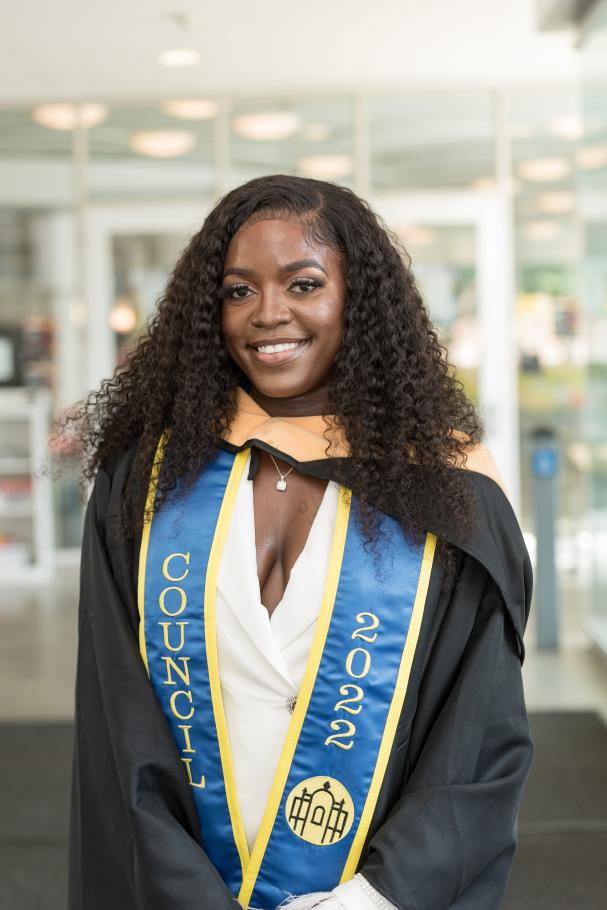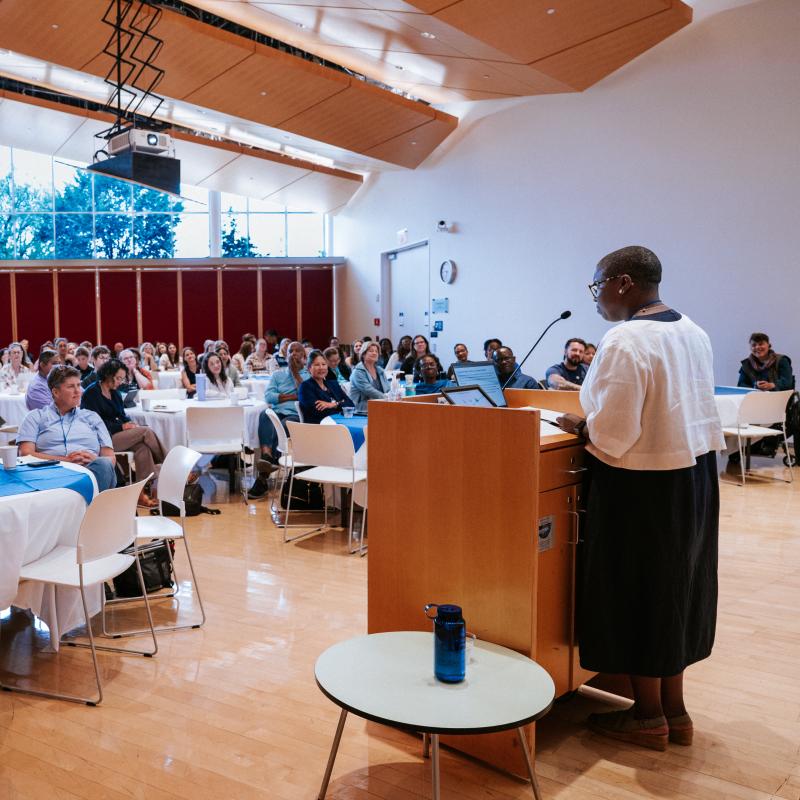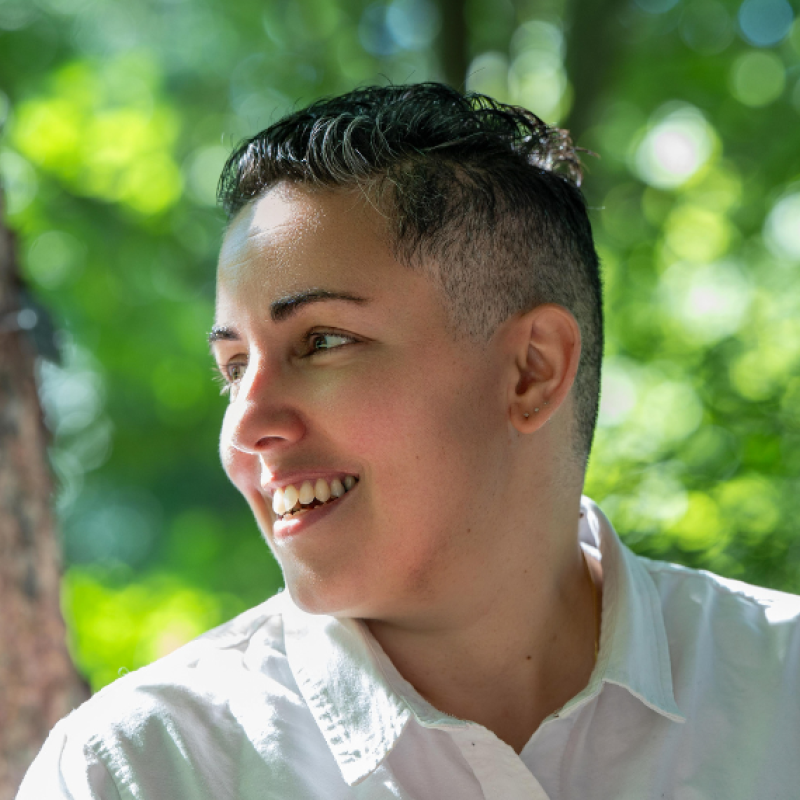
Beth Nanjala Luvisia was drawn to SSW because of the clinical social work focus, and importantly, she wanted to learn to assess and diagnose a client while considering the impact their environment has on them. Coming to SSW with the plan of becoming a clinical therapist, Luvisia found that her experiences at Smith helped her reframe her entire approach to both social work and anti-racism work.
When she started at Smith, the first thing that came to her mind for anti-racism work was protesting. Her time at SSW broadened her understanding of what anti-racism work and social justice can look like, which she experienced at SSW as collectivism and community.
“The beauty of being in community helps you do collective community work. It helps you get things going and also allows you to step back if you feel too overwhelmed… and allows others in your community to step forward when you’re feeling burnt out.”
Noting that students with historically marginalized identities can get very burnt out doing both their course work and social justice work, the community aspect created a shift in how Luvisia approaches her own academic and social justice work.
“At Smith I really learned the importance of [affinity groups], especially when we’re talking about real life, people’s lived experiences, and the ways it can be triggering even in the classroom setting. Having affinity groups was helpful and important in knowing how I can move into practice if I’m doing group therapy with folks with different identities.”

Luvisia said another new approach for her is centering joy and healing which is especially essential when working with clients who have been historically marginalized. In ProfessorJaLisa Williams course on centering the Black experience, Luvisia came to understand healing-centered therapy asa form of social justice and anti-racism work.
“[It] made me realize that my identities of being Black and a woman existing within these systems is actually anti-racism work, and learning how to take care of myself during the process in a way that doesn’t lead to burnout… [is] self preservation mode.”
Luvisia also delved deeper into the history of social work, and was surprised to learn the depth of the harm it has done to Black and brown families and it has helped her consider her own role as a social worker.
“I’m also learning that even though I’m a Black woman, I am within a system that has done a lot of harm. There's also power in being a social worker and working with other populations, whether or not they have similar identities, so that’s something I’m learning how to navigate. How to be an antiracist social worker and not to perpetuate harm within my own community. I’m looking at my own blind spots that could potentially exist.”
When Luvisia arrived at SSW, she planned to work with immigrants and refugees in the African Diaspora, especially the young adult population. Identifying as an African immigrant in the Diaspora herself, she is interested in identity development, specifically where African and American identities connect and show up in different spaces. However, after clinical experience she’s had at SSW, she’s shifting that timeline a bit and wants to develop her professional identity and boundaries before working with clients who share so many experiences and identities with her.
As Luvisia looks toward her near future, she plans to prepare for the ASWB exam, and ultimately find a job where her full self and all her identities are seen and supported.
“I plan to take a few years working on my clinical skills, learning about the field, who am I as a social worker, what do I bring to the table, what kind of therapy modality am I leaning toward, or theory, then from there refocus on what my original passion was.”


